It can be easy for us to assume that water pollution isn’t a problem most of us share and that these issues affect those farther afield, in Third World countries. But the entire world suffers from several types of water pollution, and we cannot ignore them anymore.
The Western World’s Relationship with Its Water

Many of us will turn the taps in our homes and consider that the water comes from some treatment plant, that it fulfills its purpose. We also believe that wastewater goes down the sink through an intricate system of pipes before ending back in the water filtration system.
We can think about our water as having its system in a protected and well-maintained bubble, separate from the other hydrological systems of the world and safe from the pollution and potential pathogens that afflict millions.
However, as simple and as secure as this seems, it isn’t the reality of our water supply.
For examples and data, I’ll use the United Kingdom, and more specifically, Sussex, where I live. However, the processes are similar in most developed countries worldwide. We should all feel encouraged to research the current water quality status of where we live, as well as consider the implications our daily activities are having on water quality.
How To Test for Water Quality in Your Home?
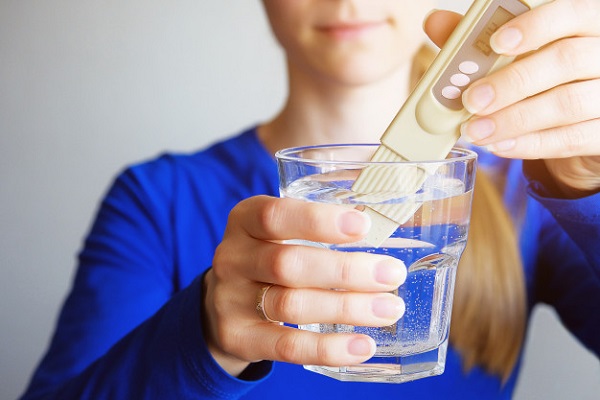
You can approach this sensitive issue in two ways:
- Call experts that can test in a lab the quality of the water you drink;
- Perform a water test yourself by using a water testing kit.
The latter solution is preferable because modern water testing kits do test the water for a load of possible impurities, from the commonplace chlorine to bacteria and even to rare heavy metals or radiological contaminants. Moreover, they are way cheaper than a professional analysis and can generate results in minutes.
Once you understand better what types of impurities you have to deal with at home, you can make an educated choice regarding their elimination.
The water in the UK experiences a range of tests to ensure quality. Everything from arsenic content to fecal coliforms goes under scrutiny, and thankfully, the UK has a water quality of 99.99%. Despite this, on occasion, traces of Coliform Bacteria, including fecal coliform bacteria, have been found during testing, posing immediate health risks to anyone that drinks it.
In fact, in 2018, the water wasn’t of a satisfactory quality during testing 1185 times based on everything from turbidity (transparency of the water) to the minerals and pathogens within it.
So how do even some of the cleanest waters in the world become polluted?
All water is the same and operates on a vast scale and cycle. The water coming when I turn my taps comes from Sussex groundwater, and it is released following a series of treatments back into the rivers and the oceans that transverse the Earth.
There are different types of water pollution, each of which has its effects on the life source, which we all utilize.
Main Types of Water Pollution
When it comes to water pollution types, you have to understand that they come in different shapes and scales. Let’s see them and discuss some of the solutions we have to counteract and even solve such issues when we encounter them in our everyday lives.
Surface Water Pollution
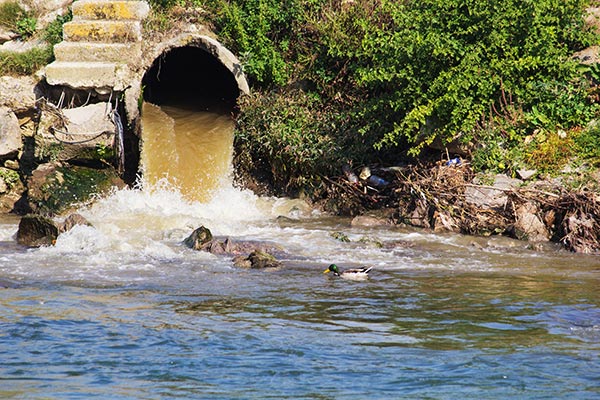
Surface water pollution is precisely what its name suggests – the top layer of water becomes polluted. This phenomenon occurs predominantly from human waste.
It is not unfamiliar now to see litter collecting in the nooks of lakes, rivers, and even the ocean.
The rate at which surface water pollution happens correlates with the urbanization of nearby areas.
The math is quite simple: more people = more rubbish and run off of waste.
Groundwater Pollution
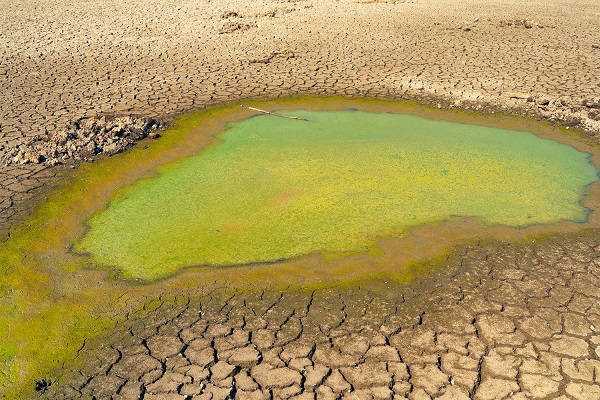
Groundwater is the area underneath the surface water, and it is where much of the consequences of surface pollution occurs. The definition of groundwater is as follows: it is the water forming in spaces of soil, sand, and rock (aquifers) and is the primary source of our drinking water. The water I receive and drink in my home is from Sussex Groundwater.
It is easily polluted and difficult to restore.
Groundwater becomes polluted in a multitude of ways.
Eutrophication
Movement of soil during rain causes any pollutants in the soil to wash into the water. These soils can contain pesticides, fertilizers, animal waste, or household waste. Where sanitary waste options aren’t available, you can also find traces of human feces.
A significant problem is waste coming from septic tanks leaking through the soil. Even more significant is the eutrophication of pollutants from landfills. Throwing everything into a dump is a common practice that developed areas use to “get rid of waste.”
The waste ends up literally below your feet in a process similar to the sweeping of garbage under a rug only for it to return to the water we drink.
Leachate migration
A phenomenon occurring when water penetrates through solid materials and picks up the matter, carrying it into an aquifer. It is rare, but an occurring problem in Sussex water.
The chalk aquifers luckily help to dilute the contaminants. Leachate migration is a concept that needs to be utilized more often where water crises occur worldwide.
How Do We Stay Safe from Groundwater Pollution?
If you notice that there is something wrong with your water, alert all concerned parties and authorities and don’t keep quiet. Nobody wants the Flint history repeating. If the situation is still tolerable – at least from the authorities’ point of view – consider home water filtration.
You have two choices here:
- Whole house water filters with activated charcoal technology for some of the most common impurities and contaminants;
- Reverse osmosis water filters for almost all common and less common contaminants, including viruses, bacteria, heavy metals, radiological traces, and so on.
Whole house water filters with carbon filtration technology work very well for medium/large homes and families that want to stay completely safe from water pesticides, fertilizers, metals, and so on. Such filtration systems come with specific tech and designs to function with city tap water or severely contaminated well water.
Reverse osmosis filters offer more advanced water purification solutions. They do indeed eliminate everything from the water, the nutrients and minerals included. Nevertheless, you should not fret at the idea of drinking “flat water.” Modern RO systems com with tech and designs that put healthy minerals back in the water. The main advantage is that these minerals and nutrients feature controlled origins and balanced quantities.
Check The Best Whole House Water Filters Check The Best Reverse Osmosis Filters
Chemical Water Pollution

Pollution doesn’t just occur on large scales, and chemical contamination proves this point. Pesticides used during farming and agriculture that end up in our water systems can also occur on smaller scales.
We have talked about the impact of the fashion industry upon the environment many times before. However, it seems legit at this point to remind you of some facts and figures.
-
Besides the fact that we irrigate cotton, we also use a lot of pesticides.
-
Farming cotton is just the tip of the iceberg, however. An apparel retailer’s water footprint relates to manufacturing (in a proportion of around15%).
-
The textile treatment and dyeing process produce an average of 20% of all industrial water pollution.
-
Throughout the world, the fashion industry uses around 8,000 synthetic chemicals to transform raw textiles into wearable items. Many of these chemicals reach freshwater sources. Many are impossible to clean/remove. Many of these chemicals pollute nearby water resources through runoff, endangering multiple ecosystems.
Let’s not even discuss home gardening practices or pouring detergents down our sinks.
Learn More About No Water Waste GardeningProducts such as paint thinners and bleach contain chemicals that destroy helpful bacteria used in the treatment process. These chemicals aren’t changed or removed during the treatment processes as they can’t be broken down and end up back in the water.
Learn More About Fashion’s Environmental ImpactMicrobial Water Pollution
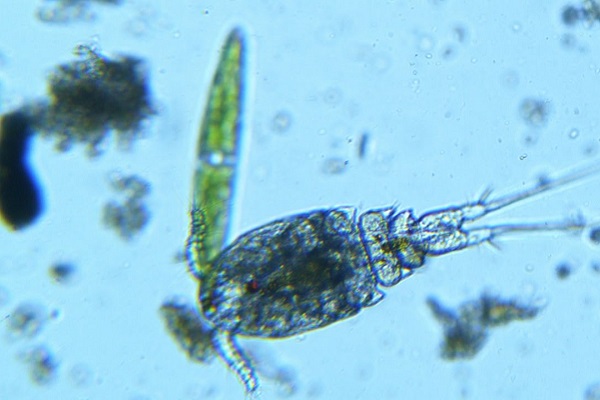
Water is full of microorganisms that can be a detriment to not only the aquatic life of those that share the water source but also for people who use the water for drinking, cooking, and cleaning.
All living organisms in a body of water rely upon each other; just as the plants take from the water and soil (bioaccumulation), some fish and small aquatic life feed upon this plant. These fish represent the food for others, and so on. If a land animal were to eat fish from this same source then it would take in the microbial bacteria taken from the primary source. This process is known as biomagnification.
Further to this, where life is challenged by pollution, it puts it at risk. If one species in a body of water dies, it puts the entire ecosystem in jeopardy.
Such a phenomenon paints a critical image. Whatever actions we take on land will end up going through the water and back into our systems.
Recently, specialists discovered that a polar bear in the Arctic had traces of Polybrominated diphenyl ethers (PBDE), a fire-retardant chemical used on furniture and electronics. These chemicals will remain there for years as they cannot break down, particularly in cold climates.
So, how does a polar bear in the Arctic accumulate these chemicals?
Fire-resistant chemicals are commonly used in everyday items, particularly in fabrics for cushions. When we the people discard these items, their compounds leak away in the water. They spread across the ocean, only to be ingested by the various animals that live in those environments.
It is thought that the seals eating the fish take in these chemicals, which are then eaten by the polar bears. Many cubs take in these nutrients further in breast milk, and their survival rates drop dramatically because of it.
Do We Drink Some of These Microbes as Well?
Of course, we do. Luckily for us, we do feature some levels of immunity to such pesky water contaminants. Nevertheless, for people with low immunity, children, pets, and seniors, some cautions are necessary. If you know you or your loved ones have certain health issues and you do not want to expose yourself to anything that might swim in your tap water, some water filters or water purification techniques can keep you safe.
Boiling water is the first thing that comes to mind, as it does come with its advantages. It has its limitations when it comes to removing chlorine, but it is a fast, simple, and quite a reliable method of removing microbes and other microorganisms from your drinking water.
Learn More About Distilled Water vs. Purified WaterDistillation, on the other hand, does do a great job of purifying the water. If you need safe and clean water to cook with or drink daily, it is the right choice. Most modern water distillers also come with charcoal filters, so you have the purest water possible at your fingertips!
Ocean Pollution
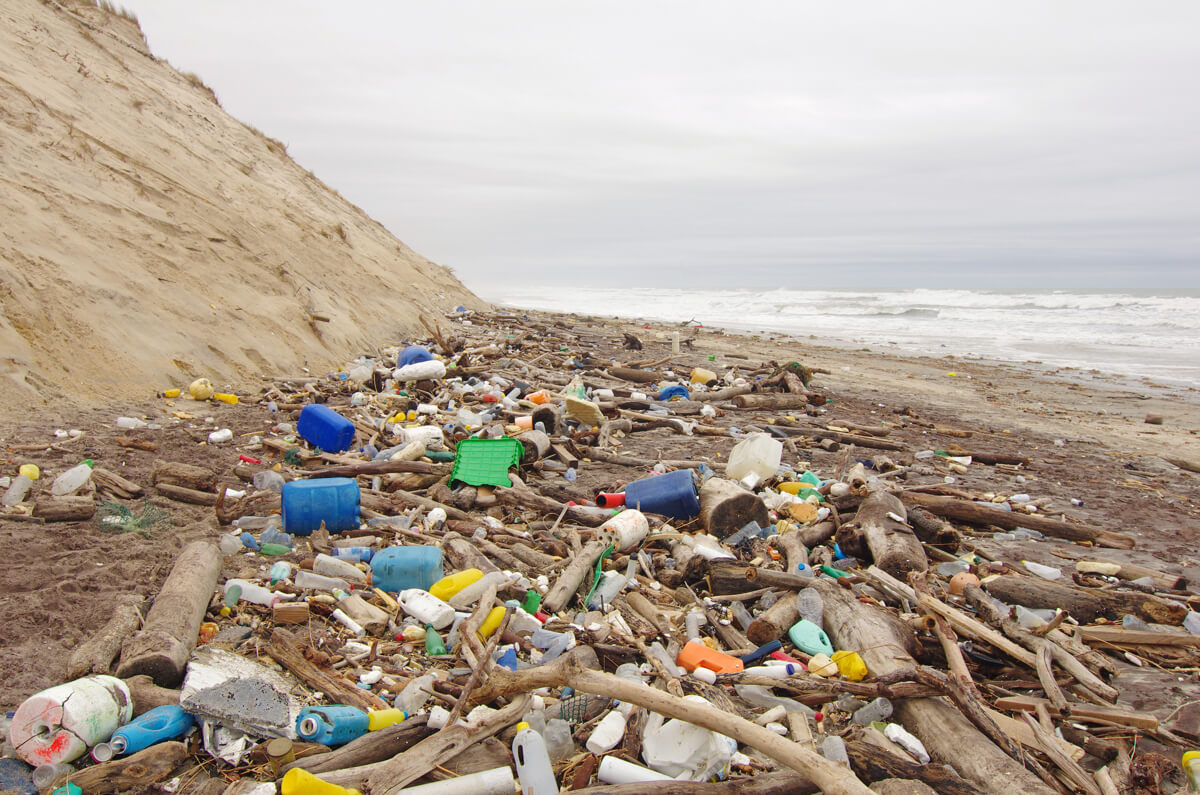
The ocean and all our water sources are connected and operate in a system of intricate and fragile natural processes. The water moves in different currents powered by wind, tides, the rotation of the Earth, the sun, and water density.
All of these systems, in turn, affect the weather we experience inland, which is why global warming is so concerning and, as explained in microbial pollution, the currents of the ocean carry pollutants that occur close to home.
Humanity pollutes its oceans with what it seems to be recklessness and even malevolence, sometimes, especially if we think about ocean plastic pollution’s effects. Nevertheless, there are solutions to this issue and we should talk daily about them.
Learn More About The Effects of Plastic Pollution in the OceanThermal Water Pollution
Thermal pollution is a threat that comes mostly with global warming. As the Earth warms, the water increases in salinity, changing the density of water and upsetting the currents.
The warming of water also endangers corals; when distressed from warming, coral dispels the algae it uses for food, and bleaching occurs.
On a smaller scale, algae can be detrimental to a lake or pond. Algae occur from an abundance of nutrients and (nitrogen and phosphorous) heat in the water. As nutrients occur from algal pollution, growth begins. Algae, commonly seen as green scum in water starves the water of oxygen, blocks sunlight, and threatens the species that live within the water.
Nutrient Water Pollution
When we pollute, whether it’s from eutrophication or littering in water, the water absorbs the nutrients from our waste. Too many nutrients such as nitrogen and phosphorus are collected in bodies of water, further encouraging algae growth. Vegetation decay and particularly wildlife and animal waste is the cause of much water pollution worldwide.
Animal feces carry the nutrients absorbed by the animal during its feeding and natural bodily processes. When free grazing occurs, or mass agriculture from animal farms, the waste from these animals goes through the eutrophication into the water.
It gives us an insight into ways that water is polluted, but all of them are linked and affect one another.
There is a multitude of ways to reduce pollution from our daily activities, but the first step is to change the way we think. As stated at the beginning of the article, it is easy to think of our drinking water as clean and separate from all other waters on Earth.
But water is a source we all share and depend on. Once polluted, it is near impossible to replenish, and so change needs to occur now, at every level, from agricultural farms to governing bodies, to our practices at home.
Do such contaminants reach our tap water?
The answer is yes, most likely. You have to understand that most countries set standards for such contaminants. In other words, if some impurities do not go over a certain threshold, then you are alright and the water defines as safe.
Nevertheless, no matter how safe it is from the authorities’ standpoint, you may have a problem with your daily water’s hardness, smell, taste, color, and so on. This is where information and education come in. Understand how water filters work, their types, differences, advantages, and tech specs, and make sure you and your loved ones have the best water every day!
Learn More About How Water Filters WorkHow to Prevent Different Types of Water Pollution in Your Home
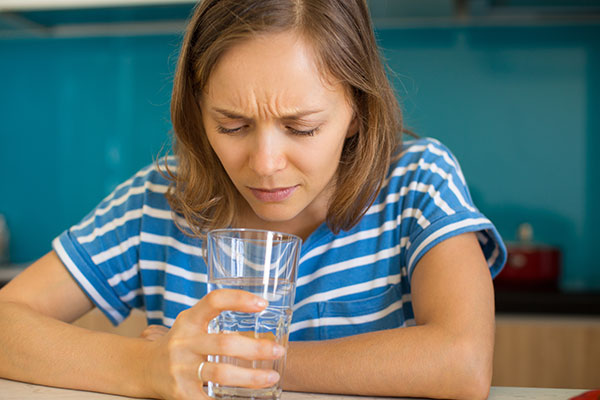
To help get you started, here are a few simple changes that you could make, and encourage your friends and family members to do with you.
1. Choose organic/alternative laundry solutions
Learn More About Washing Clothes Without Detergent2. Understand the environmental impact of food and make small changes to your diet
Learn More About the Water Footprint of Food
3. Consider sustainable gardening practices
Learn More About At-Home Sustainable Garden Watering Practices
4. Always recycle your waste
If you see litter around, pick it up and dispose of it correctly. We all need to help keep our Earth clean.
5. Choose reusable, over one-time use products
Think about plastic bags and bottles, straws, nappies, and takeaway coffee cups, among others. Consider where the household products or plastic items end up. Flushable wipes aren’t necessarily biodegradable, despite the marketing terms used. Always check the label and, if unsure, research into the product further.
We do have plenty of solutions for replacing such harmful everyday items.
- Reduce the use of plastic water bottles easily.
- Replace most polluting items with safer, recyclable, or compostable ones.
- Make long-term investments in insulated water bottles to reduce ocean pollution.
- You can also use filtered water bottles every day to make sure you did your part in putting a stop to at least one type of water pollution.
6. Educate others on water pollution types, ways to improve, and why
7. Try your best
Start small and increase your lifestyle changes as you go. More minor accomplishments will help to encourage behavior changes. Sustainability is not hard, especially if you put your heart in it.
Bottom Line
When we discuss the various types of water pollution, we cannot ignore the human factor. In fact, we are the ones enabling it and even take it to unprecedented levels. While it is unrealistic to believe we could all live in a pristine environment, we do have to realize that we share this home with others, human, plant, or animal. More importantly, however, we should leave this home as clean and safe as possible for the generations to come.